Custom baby blankets are ideal for all seasons and requirements. They differ from regular blankets because they are lightweight, small, and breathable. These features make them safe for infants and babies while keeping them cozy and warm. This article will guide you through everything you need about baby blankets.
Can I Use a Regular Blanket for My Baby?
You should not use a regular blanket for your baby if you are not monitoring. Traditional blankets pose particular risks to the safety of babies because they are big, and the material is not always suitable. These blankets can cause entanglement, suffocation, and allergic reactions.
The regular blankets are loose for babies because of their size. The babies can get tangled or trapped in the fabric. It can restrict the airflow, and babies can get injured. Moreover, if you leave your baby unattended, the blanket can cover the baby’s face and cause suffocation.
Some blankets are heavy and very warm, which is not ideal for infants because they do not regulate the body temperature. Some fabrics cause irritation or respiratory issues in sensitive infants. Such blankets impose a high risk to health and can even be fatal.
Considering these problems, regular blankets are not suited for infants. They can be replaced with wearable or hooded blankets or swaddle wraps produced with ideal infant material.
What Are the Benefits of Using a Baby Blanket?
A baby blanket has many benefits, including warmth and comfort. The blankets calm and soothe babies and help them sleep comfortably. These blankets have numerous uses and are the perfect snuggle buddies for infants. Baby sleeping blankets have the following benefits:
- These blankets are not loose, so when wrapped, the babies feel secure as the blankets provide a calming and soothing sensation.
- They provide enough warmth to keep the baby warm but not so much that they sweat and get uncomfortable.
- These blankets have many uses, such as covering the stroller, playing, and diaper changing mats.
- The soft feeling of the blanket against the skin promotes relaxation and helps the babies sleep fast.
- They make the babies feel secure and cozy when they are wrapped.
- The blankets mimic the feeling of a womb.
What Are the Different Types of Baby Blankets?
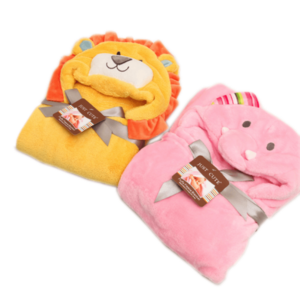
There are different types of baby blankets based on how they are stitched and fabric. The following types are commonly used:
Swaddle Blankets
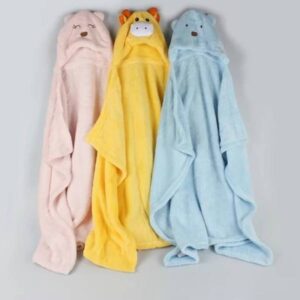
As the name suggests, swaddle blankets are the best option for wrapping infants. These blankets are large, which makes them ideal for covering around. It perfectly tucks in the babies, providing them with a sense of security and comfort. Swaddle blankets are usually square-shaped and made of breathable fabrics such as cotton.
Sleep Sacks
You might have heard about wearable blankets. These are also called sleep sacks or bags because newborns can wear them while sleeping. These blankets have arms and neck openings so the infant’s face or arms are not trapped. Sleep sacks are the best baby blankets for safety because they do not cover the face and prevent suffocation.
Receiving Blankets
You might have seen these blankets in hospitals. Nurses usually wrap newborns in them because they are soft and lightweight. Most of these blankets are muslin or soft cotton. The best thing about receiving blankets is that they are versatile. You can use them to swaddle the baby, change the diaper, or any other purpose.
Security Blankets
These are the best cuddle buddies for babies and toddlers because they have plush toys attached to one end. Some call them lovey blankets because they are soft and create a secure baby setting.
Hooded Blankets
The hooded blankets have a hood on one corner that covers the head and neck. You can wrap the other three corners around the baby while the hood eliminates the need for a separate cap. These blankets are ideal for keeping the head warm after a bath. The hood is sometimes fashioned as a cartoon character making the blanket visually appealing.
Some blankets are classified according to the fabric or production method, for example:
- Minky Blankets
- Fleece Blankets
- Muslin Blankets
- Flannel Blankets
- Sherpa Blankets
- Quilted Blankets
- Crocheted Blankets
How Do I Store My Baby’s Blankets?
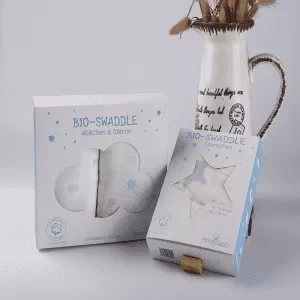
You can store your baby’s blankets by cleaning them to remove stains or smells. Make sure they are thoroughly dried before you fold them. You can keep them in labeled bags for better identification and place them in a dry accessible area.
It is essential to clean the blankets before storing them. Otherwise, your cupboard or storage compartment would produce an unbearable smell. Moreover, it is difficult to remove old stains, so you should clean the blankets as soon as they get dirty.
Ensure the blankets are dry because mold will grow and damage the fabric if you store them even with a bit of moisture. Fold the blankets to save storage space. You can also roll them to avoid wrinkles. Keep the folded or rolled blankets in breathable bags or boxes to protect them from moisture, mildew, dirt, and pests.
You can categorize and label the boxes if you have many baby blankets. For example, you can classify them according to the season and size of baby blankets. It will save you time when you need to use the blankets again.
Store the bags or boxes in a dry area to protect them from moisture and sunlight. You can keep rotating the bags according to the baby’s requirements. It helps declutter the storage space.
How Do I Clean My Baby’s Blanket?
All baby blankets come with care instructions that guide users about the washing or cleaning process ideal for the fabric. Using the proper cleaning procedures increases the durability of the material. The care label usually mentions the water temperature suitable for the textile and washing mechanism.
Some baby blankets are easy to clean because they are machine washable. Other delicate blankets with appliques or intricate trims do not withstand the machine and must be hand washed. Additionally, some fabrics need a gentle detergent. You should avoid fragrant detergents because they can irritate the baby’s skin.
Things You Need To Consider While Buying Customized Baby Blankets
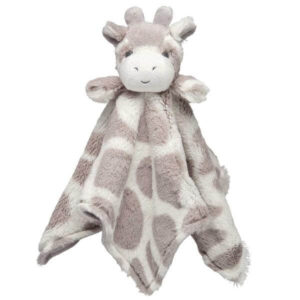
You must consider some things while buying baby blankets, such as the season and room temperature. You should also decide on the baby blanket size, material, and safety. These considerations will help you land the best baby blankets for your infant.
How Do I Choose a Baby Blanket for Different Seasons?
Choosing blankets for different seasons means that you should consider different fabric types. If you buy a baby blanket for summer, use lightweight and breathable fabrics such as cotton and muslin.
For transitional seasons such as spring or fall, you can opt for slightly cozy fabrics such as flannel or thick cotton. Winter season calls for warm blankets that provide insulation. Fleece is the best option for winter since it is not bulky yet provides warmth.
It is essential to consider your baby’s room temperature because getting warm blankets would not be a good idea if it is warm. You can also bring custom baby blankets and select the fabric, size, and designs.
What Size Baby Blanket Should I Choose?
The baby blanket size depends on many factors, such as your baby’s age and intended purpose. Generally, you can buy receiving blankets if you want a small blanket for wrapping a newborn. These are small, with each side around 30 inches long. It is enough for swaddling or for changing the diaper.
You can look for swaddle blankets around 40 or 47 inches on each side if you want a bigger size. These blankets allow for a snug swaddle and are suitable even for a few months’ baby. You can get rectangular crib blankets that are 45 inches by 60 inches. This size is ideal for cribs because it is large enough to cover the mattress but does not hang outside.
Avoid loose blankets because they are not safe for babies. You can order custom baby blankets from online stores to get the appropriate size. Consider your baby’s size and the purpose of use while placing the order.
What Materials Are Best for Baby Blankets?
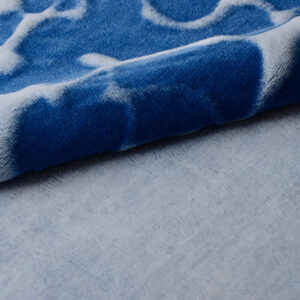
The best materials for baby blankets include cotton, muslin, bamboo, flannel, and fleece. Organic fibers are well suited for infants because they are hypoallergenic. Therefore, you should avoid synthetic fabrics and dyes that irritate baby’s sensitive skin.
If you want blankets for summer, you should select soft and breathable materials like bamboo and cotton. They feel delicate on the skin and allow airflow. Babies can regulate their body temperature when wrapped in these blankets.
Flannel and fleece materials are suitable for winter use. They are warm, soft, cozy, and lightweight. Other warm fabrics are heavy, so they are not recommended for infants.
How Can I Tell if a Baby Blanket Is Safe?
While considering the safety of baby blankets, the first question is, “When can babies sleep with a blanket?” Blankets are not recommended for babies younger than 12 months because they can get entangled and suffocate.
Comparatively, wearable blankets are safe because they do not cover the face. Moreover, bulky or multiple-layer blankets can cause sudden infant death syndrome. Thus it would be best if you always opt for breathable materials.
If your baby has sensitive skin and has diagnosed allergies, go for hypoallergenic and organic fabrics. Large or loose blankets are unsuitable for babies as they can cover the face. With that said, you should constantly monitor infants and babies to ensure their safety.
